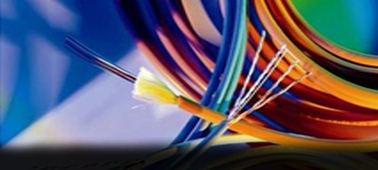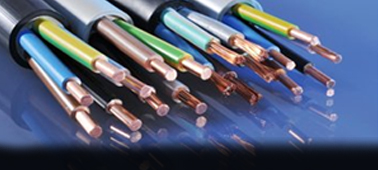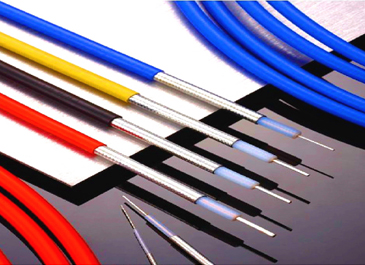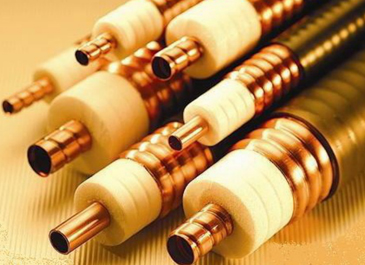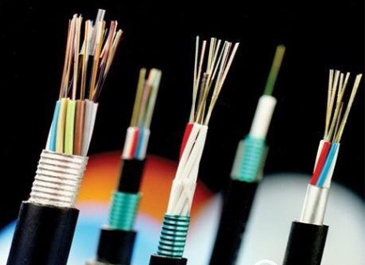Top five cable technologies in the world
Release time:2021-01-08 Number of Views:511
Polaris power transmission and distribution network news: no matter in the field of power system, information transmission system, or electrical equipment and instruments, the application of cable technology occupies a considerable proportion, so what are the top five cable technologies in the world today?
1. Research and development of nanowires for power storage and transmission in the United States
The Central University of Florida has recently developed a nanowire that integrates power storage and transmission. An extremely thin plastic sheet is added around the nanowires formed on the outer layer of the copper wire and wrapped with metal protective layer. Finally, a special gel is used to bond the layers together. Because the nanowhisker is insulated, the outer layer of the copper wire can store electricity separately while the inner copper wire retains the conductive function. The technology can be directly applied to electric vehicles, space launch vehicles and portable electronic equipment, which is conducive to reducing "weight" and cost.
2. 42 new cable installation tools come out
Southwire has launched 42 new cable installation tools to meet the needs of customized installation. This VDV tool also further complements the product range of its low-voltage cable product line and related tools and equipment lines. It is reported that this is a product development method based on installation program to improve the on-site installation efficiency of cable products. The company launched 42 new cable installation tools, including cable scissors, stripping pliers, crimping machine, wiring tools, cable tester and tester.
3. Copper cable transmission rate sets 100gbps record
Bell Labs uses a single pair of copper wires to achieve 1Gbps symmetric transmission rate within 70 meters, and uses double pairs of copper wires to achieve 100gbps transmission rate within 30 meters, and the copper cable transmission rate refreshes the 100gbps record. This achievement is called xg-fast technology, which is an extension of g.fast technology. The transmission frequency of this technology is increased to 500MHz, but the distance is much shorter than g.fast protocol standard, so it can only achieve relatively high-speed transmission in a short distance. Optical fiber can be used in the home to improve the home network transmission, or improve the transmission rate in the community. The official version of the technical standard is expected to be released this year.
4. South Africa develops portable devices to protect submarine cables from sharks
Sharkpod, a new device developed in South Africa, can protect submarine cables and divers from sharks. The device takes advantage of the feature that "sharks can also capture the trace current emitted by the beating heart of prey in the deep sea". It can only change the direction when sharks are close to the current barrier and leave. It can protect submarine cables and human safety on the basis of not harming sharks, seals, dolphins and other creatures. It is reported that the device will be tested on submarine cables for five months, and more large-scale experiments will be carried out in the future. At present, some Australian enterprises have begun to sell the device, which adds a heavy protection to the submarine cable. If it is successful, it is expected to be popularized in the world.
5. Intelligent cable protection technology reduces cost and increases reliability
Dnvgl, an energy consulting and testing organization, announced intelligent cable protection solutions to continuously monitor and detect the exact location of faults in the medium voltage (MV) power cable system. The scheme can know the latest situation of cables in real time, shorten the maintenance time, enhance the stability of medium voltage power cable system, and reduce the overall service cost for public utilities and industrial asset owners.
1. Research and development of nanowires for power storage and transmission in the United States
The Central University of Florida has recently developed a nanowire that integrates power storage and transmission. An extremely thin plastic sheet is added around the nanowires formed on the outer layer of the copper wire and wrapped with metal protective layer. Finally, a special gel is used to bond the layers together. Because the nanowhisker is insulated, the outer layer of the copper wire can store electricity separately while the inner copper wire retains the conductive function. The technology can be directly applied to electric vehicles, space launch vehicles and portable electronic equipment, which is conducive to reducing "weight" and cost.
2. 42 new cable installation tools come out
Southwire has launched 42 new cable installation tools to meet the needs of customized installation. This VDV tool also further complements the product range of its low-voltage cable product line and related tools and equipment lines. It is reported that this is a product development method based on installation program to improve the on-site installation efficiency of cable products. The company launched 42 new cable installation tools, including cable scissors, stripping pliers, crimping machine, wiring tools, cable tester and tester.
3. Copper cable transmission rate sets 100gbps record
Bell Labs uses a single pair of copper wires to achieve 1Gbps symmetric transmission rate within 70 meters, and uses double pairs of copper wires to achieve 100gbps transmission rate within 30 meters, and the copper cable transmission rate refreshes the 100gbps record. This achievement is called xg-fast technology, which is an extension of g.fast technology. The transmission frequency of this technology is increased to 500MHz, but the distance is much shorter than g.fast protocol standard, so it can only achieve relatively high-speed transmission in a short distance. Optical fiber can be used in the home to improve the home network transmission, or improve the transmission rate in the community. The official version of the technical standard is expected to be released this year.
4. South Africa develops portable devices to protect submarine cables from sharks
Sharkpod, a new device developed in South Africa, can protect submarine cables and divers from sharks. The device takes advantage of the feature that "sharks can also capture the trace current emitted by the beating heart of prey in the deep sea". It can only change the direction when sharks are close to the current barrier and leave. It can protect submarine cables and human safety on the basis of not harming sharks, seals, dolphins and other creatures. It is reported that the device will be tested on submarine cables for five months, and more large-scale experiments will be carried out in the future. At present, some Australian enterprises have begun to sell the device, which adds a heavy protection to the submarine cable. If it is successful, it is expected to be popularized in the world.
5. Intelligent cable protection technology reduces cost and increases reliability
Dnvgl, an energy consulting and testing organization, announced intelligent cable protection solutions to continuously monitor and detect the exact location of faults in the medium voltage (MV) power cable system. The scheme can know the latest situation of cables in real time, shorten the maintenance time, enhance the stability of medium voltage power cable system, and reduce the overall service cost for public utilities and industrial asset owners.


